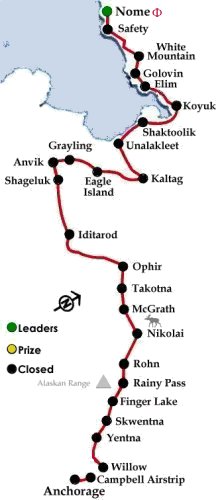Japan – In General
From several sources, including the Doctors Without Borders site [I donate what I can there, because I like their work, and they start immediately]: The basic problem would seem to be logistics. The government has the necessary supplies, but they did not plan for a situation where they lost the ports, the landing fields, the railroads, and the roads. They haven’t yet come up with a plan to distribute the supplies on anything more than a hit and miss basis.
There is no gas or diesel available in the affected area, so private efforts have to take enough fuel with them to make the round trip, which severely limits their reach. Approximately 100,000 people are in shelters, and they can get medical care, but they can’t get enough food and water. The area back from the coast that wasn’t wiped by the tsunami is relatively intact but the transportation systems and power grid are broken.
Food, water, and warmth are the primary concerns.
The US military can solve this problem, as they did in Haiti, but they can’t do what they aren’t asked to do, and they haven’t been asked. The same airdrops by C-17s would work, but they have to be coordinated on the ground, and it is not clear that the Japanese government understands what can be done. [Note: The US is the best in the world when it comes to logistics. We have more practice than any other country, and the rest of the world just assumes that we will do it.]
The overall problem would seem to be that the situation doesn’t match the plan for disaster response, and they are very slow to adapt to the facts.
Doctors Without Borders does not have a Japan fund started, as they are still assessing the situation, and are not sure that it will be necessary. They have no plans to be involved in the radiation exposure cases, as the Japanese are probably the best in the world in that area. They have not been able to reach the northern-most section of Honshu island.
March 18, 2011 2 Comments
Iditarod 2011 – Day 13
 Everyone is traveling West on the northern coast of the Norton Sound and the weather continues to be good.
Everyone is traveling West on the northern coast of the Norton Sound and the weather continues to be good.
While everyone talks about John Baker breaking the overall record for the race, few have noted that he smashed Doug Swingley’s 1995 record for the Southern Route: 9 days 2:42:19. Breaking John’s new record on the Northern Route is very possible, but the record on the Southern Route should stand for quite a while.
Ellen Halverson (26) may get an unwanted record as the only musher to win the Red Lantern twice, but she may also beat Celeste Davis’s record for fastest Red Lantern time: 13 days 5:06:40. This has been a seriously fast race.
At Nome
25 Trent Herbst (4)
26 Kelley Griffin (20)
27 Ed Stielstra (56)
28 Nicolas Petit (14)R
29 Kristy Berington (7)
30 Kelly Maixner (55)R
31 Jodi Bailey (16)R
32 Lachlan Clarke (42)
33 Magnus Kaltenborn (22)R
34 Paul Johnson (46)
35 Cain Carter (48)R
36 Wattie McDonald (38)
Beyond White Mountain
37 Justin Savidis (63)
38 Billy Snodgrass (24)
39 Gerald Sousa (62)
40 Matt Giblin (60) [Read more →]
March 18, 2011 4 Comments
Friday Cat Blogging
Just Flight

Got to go …
[Editor: This grainy picture was taken at long distance of a yearling feral who has spent most of its life a step away from me, but that I almost never see as anything other than a blur. This is one of two kittens who were raised and live under my house, but run whenever they see me. While the facial markings are similar to Tip, Tip is spayed and both inherited the markings from the Grey-nose Tom. Some day I may get a picture of the littermate, but it will be another accident.]
March 18, 2011 6 Comments
Other Problems
Power plants on land weren’t the only major damaged infrastructure. The BBC reports that Japan to repair damaged undersea cables
Aftershocks are still preventing Japan’s telecommunication companies from repairing undersea cables, damaged in the recent earthquake and tsunami.
To restore services, many providers have rerouted traffic to backup cables.
KDDI, Japan’s second-largest telecoms operator, said it will send out a ship equipped with remotely-controlled robots as soon as the ground is still.
…KDDI is not the only telecommunications company in Japan badly affected by the disaster.
The country’s biggest operator, NTT, was hit hard as well.
…Other companies with undersea cables in the waters around Japan include Australian operator Telstra International, Taiwan’s largest phone operator Chunghwa Telecom, and global telecommunications service provider Pacnet, headquartered in Singapore and Hong Kong.
While some of them say their services have been restored, others are still struggling.
The guy in charge at KDDI has his head on straight. Since they can’t do anything until the aftershocks calm down, he is the only one going to the office. He assumes that his employees have a lot to do that wouldn’t be helped by sitting around at the office doing nothing.
In the same vein, the US is pulling military dependents out of Japan. The Japanese need the resources currently being used by non-essential US citizens.
March 18, 2011 Comments Off on Other Problems


































